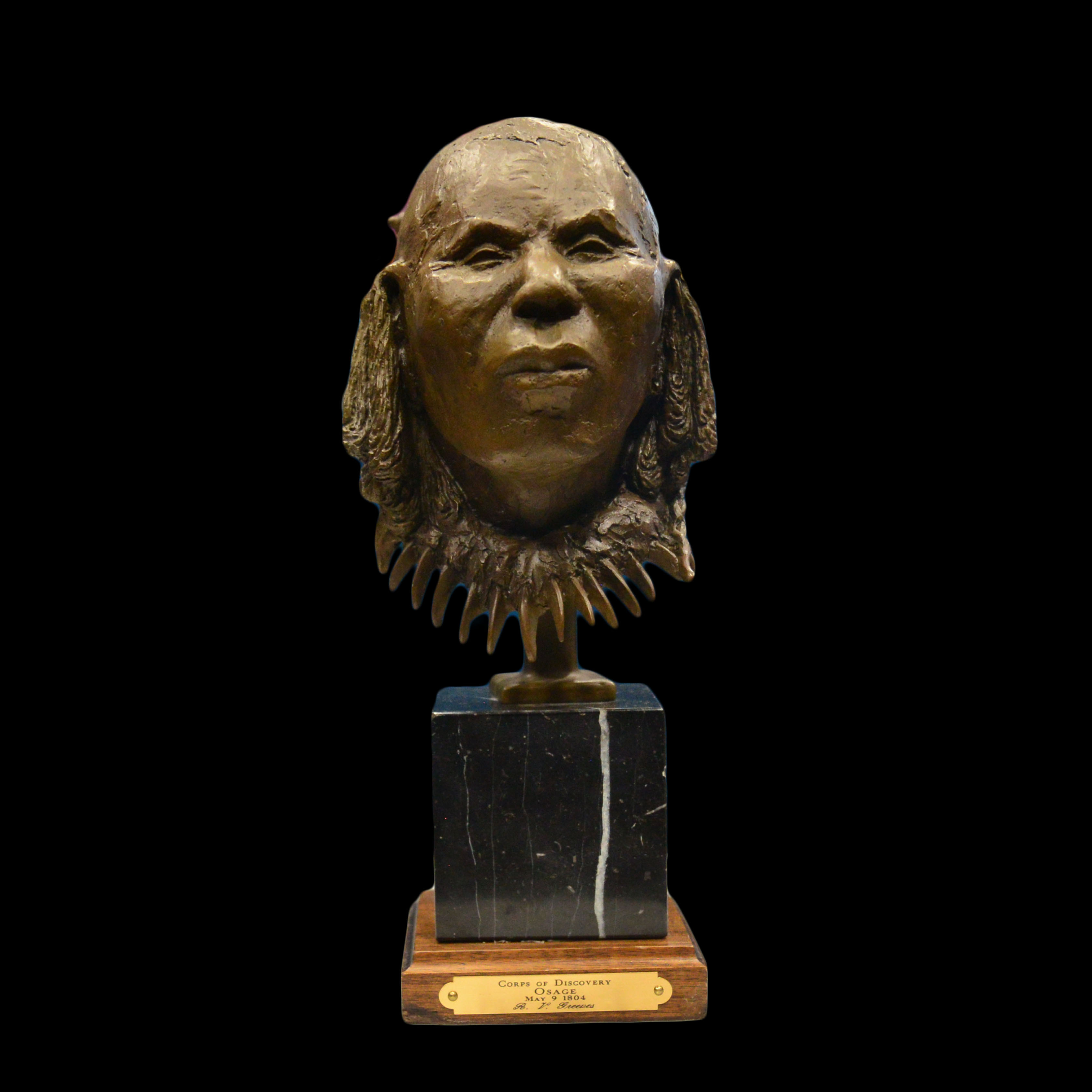A face like stone, carved from a people who never moved for the wind.
Richard Vernon Greeves
Contemporary

“Osage – May 9, 1804” by Richard Vernon Greeves is a bronze bust that emanates pride, presence, and unspoken power. Sculpted with minimalist precision and grounded intensity, the figure's gaze is neither inviting nor evasive—it is immovable. His head is framed by stylized hair and a flaring collar that suggests both natural ornament and ceremonial distinction.
The date marks the early staging of the Lewis and Clark expedition, a time when the Osage Nation was one of the most politically and militarily powerful tribes on the plains. Greeves doesn’t show confrontation or diplomacy—instead, he freezes a look that could just as easily say “You’re here now. But we’ve always been.”
The subtle texture of the bronze skin contrasts with the sharp flare of the collar beneath, resembling a crown of feathers or thorns—interpretable as strength, defense, or sacred geometry. It’s a sculptural nod to both presence and warning.